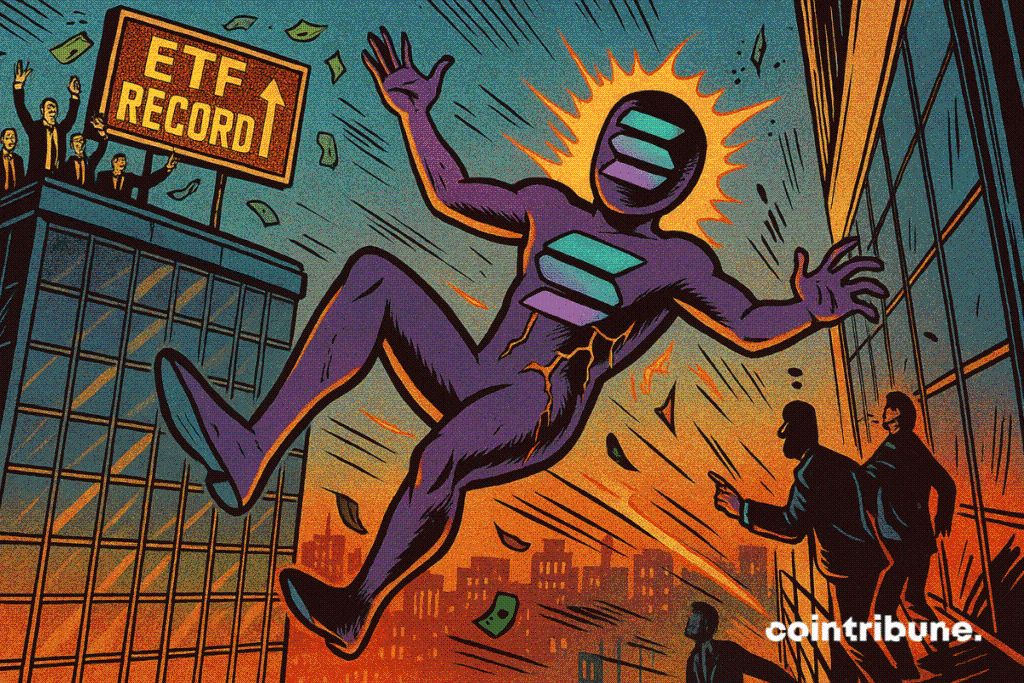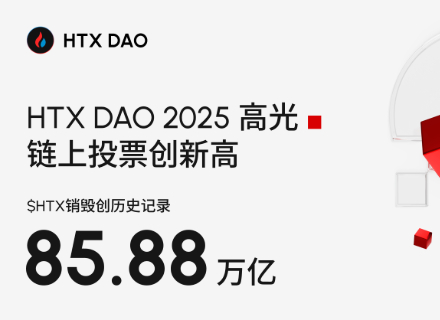SOL Price Dives Despite $370M ETF Inflows
While ETFs backed by SOL have recorded steady inflows for nearly two weeks, its price is plunging, reaching a five-month low. This striking paradox between institutional enthusiasm and spot market weakness raises the question : why does such a supported asset fall so sharply ? Away from classic patterns, Solana reveals the deep, sometimes contradictory tensions currently affecting the crypto ecosystem.

In brief
- The price of Solana (SOL) falls to its lowest level in five months, reaching $142, despite strong institutional interest.
- Solana ETFs have recorded thirteen consecutive days of positive inflows, totaling $370M in investments.
- This gap between massive inflows and price decline reveals tensions between spot and derivatives markets.
- Technical indicators are alarming: major supports broken, RSI dropping, and a real risk of sliding towards $100.
A record inflow on Solana ETFs : interest remains strong
While the price of Solana (SOL) is experiencing a marked drop, institutional investors’ interest in derivative products backed by this asset remains strong.
Indeed, Solana ETFs have recorded thirteen consecutive days of inflows, a signal rarely seen on an asset undergoing a correction. On Thursday, ETFs recorded $1.49 million in inflows, bringing cumulative flows to $370 million, for a total assets under management exceeding $533 million.
Bitwise’s BSOL was the only ETF to record inflows that day, marking nonetheless the weakest day since its launch on October 28, 2025.
Here are the important facts to remember about this dynamic :
- 13 consecutive days of positive flows on Solana ETFs despite the price drop ;
- $1.49 million inflows recorded on November 14, the lowest daily level since the launch of these products ;
- $370 million in cumulative flows, for over $533 million in assets under management ;
- Bitwise’s BSOL is to date the only ETF to have recorded positive flows on the last observation day.
This contrast is even more striking as other major crypto ETFs saw massive disengagement at the same time. Bitcoin ETFs recorded a net outflow of $866 million, their second worst daily performance since launch, while Ethereum ETFs witnessed a $259.2 million evaporation of assets.
This differential raises questions. While the overall market seems in retreat, Solana benefits from a form of resilience or strategic anticipation from institutions. However, this dynamic has not prevented the price decline, proving that institutional interest alone is not enough to support an asset under technical pressure.
A technical collapse : the crypto price breaks a two-year uptrend
Despite this institutional momentum, the crypto price plunged to $142, the lowest since June 23, 2025, thus breaking several key technical supports.
The correction broke the 100-week moving average (100 SMA) as well as the multi-year uptrend started in January 2023. Thus, the price could now fall toward the critical $100 level, which corresponds to the 200-week moving average, considered the last major support level. The current area around $140 is described as a “key price zone identified on the daily chart”, a level offering little real support.
Moreover, indicators such as the UTXO Realized Price Distribution (URPD) reveal a low density of historical buyers below $140, limiting chances of an immediate technical rebound. The RSI (Relative Strength Index) has fallen to its lowest level since April, confirming a weakening of bullish momentum.
These technical elements reinforce the hypothesis of a further drop towards $126, or even the symbolic $100 threshold. A break below $150 could extend the decline to $126, then towards the strong support at $100.
This technical setup places Solana in a delicate situation. Despite clear institutional support, the current market weakness and the absence of immediate bullish catalysts weaken the asset. In the short term, if the identified support levels do not hold, a capitulation towards $100, while the crypto was targeting $1000 , seems increasingly likely. In the medium term, everything will depend on the market’s ability to respond to negative technical signals or to find new momentum thanks to fresh fundamentals.
Disclaimer: The content of this article solely reflects the author's opinion and does not represent the platform in any capacity. This article is not intended to serve as a reference for making investment decisions.
You may also like
Major Overhaul in US Crypto Regulation: CFTC May Fully Take Over the Spot Market
The US crypto regulatory framework is undergoing a redistribution of authority, with clear divisions of responsibility between the CFTC and SEC: the SEC focuses on securities, while the CFTC is responsible for the spot market of digital commodities. The advancement of new bills and the arrangement of hearings indicate that the regulatory boundaries have been formally clarified in official documents for the first time. Summary generated by Mars AI. This summary is generated by the Mars AI model, and the accuracy and completeness of its content are still being iteratively updated.

Oil price rebound alert! Russia's largest oil port attacked, 2% of global supply disrupted
A Ukrainian drone attack has caused the suspension of oil exports at Russia's Novorossiysk port, interrupting a daily supply of 2.2 million barrels. As a result, international oil prices surged by over 2%.

When traditional financial markets fail, will the crypto industry become a "pressure relief valve" for liquidity?
The twilight of financialization: when debt cycles can only create nominal growth.


